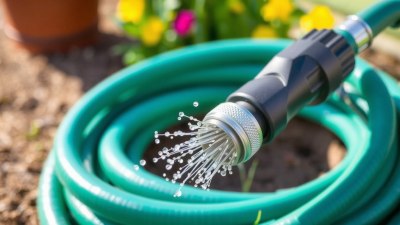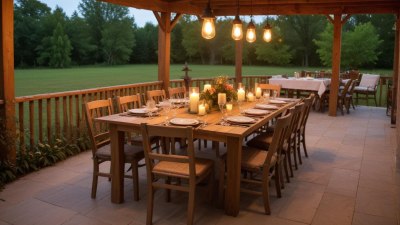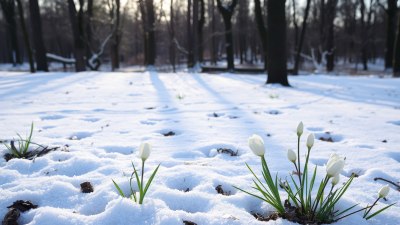Why Garden Hoses Always Strike When the Sun Is High
Discover why garden hoses often get kinked, burst, or become difficult to use during peak sun hours and how to prevent these common issues.

Image created with Flux Schnell
Garden hoses are a common tool in every homeowner’s arsenal, used primarily for watering plants, cleaning outdoor spaces, or filling pools. While they seem straightforward in function, garden hoses often present frustrating issues when the sun is at its peak. Many gardeners notice that their hoses kink, become stiff, or even crack more frequently during the hottest part of the day. Understanding why these problems occur can help gardeners take proactive steps to maintain their hoses and extend their lifespan.
Material Composition and Heat Sensitivity
Most garden hoses are made from materials like rubber, vinyl, or a hybrid of both. These materials have different thermal properties that react distinctively to sunlight and heat. Rubber hoses tend to be more flexible and durable but can absorb more heat, while vinyl hoses are lighter and cheaper but less heat resistant. When exposed to direct sunlight, the surface temperature of the hose dramatically increases, causing the material to expand, stiffen, or degrade. The increased heat makes the hose more prone to kinks or cracks because the physical properties of its material change under stress.
The Role of Water Pressure and Temperature
A garden hose is designed to channel water under pressure, but when the hose itself gets hot, the water inside also heats up. Hot water can cause pressure fluctuations inside the hose. Additionally, as the hose material heats and expands, internal stresses develop. These fluctuations and tensions are particularly problematic when the water supply switches on or off quickly, sometimes resulting in small bursts or leaks. If a hose is left in the sun for extended periods, the combination of hot water pressure and stiffening materials can cause persistent damage like valve failures or hose splitting.
How the Sun’s UV Rays Accelerate Wear
Ultraviolet (UV) rays from the sun break down the chemical bonds in hose materials. Over time, this photodegradation causes the hose surface to crack and become brittle. Even hoses labeled as UV resistant eventually succumb to prolonged exposure. This degradation is faster during peak sunlight hours, so hoses left outside without shade or protective covering are at higher risk of developing surface cracks, which lead to leaks and reduced functionality.
Impact of Environmental Factors Besides Heat
While heat and sunlight are primary stressors, other environmental factors contribute to garden hose damage. For example, sharp bends or kinks, especially when combined with heat-accelerated stiffness, increase wear and reduce water flow. Dirt, debris, and exposure to chemicals like fertilizers or pesticides can also corrode hose materials. Wind can cause hoses to move or rub against rough surfaces, which combined with heat-softened rubber or vinyl can generate micro abrasions that worsen over time.
Why Kinking Is More Common in the Afternoon
Kinks happen when the hose is bent sharply enough to block or reduce water flow. During the afternoon, the hose material becomes more rigid due to heat, reducing its flexibility and making it less able to resist bending under its own weight or from casual movements. A cooler hose, like in the morning or evening, is more elastic and can recover from minor bends. In contrast, a hot hose is more likely to hold a kink in place once it forms, leading to blockages and increased wear.
Storage Practices That Influence Hose Durability
Proper hose storage is critical to minimize damage from sun exposure. Leaving hoses coiled on the ground or in direct sunlight can cause heat buildup and degradation. Rolling hoses onto reels or storing them in shaded areas or hose cabinets protects them from UV damage and excessive heat. Some gardeners use hose covers or wrap hoses in reflective materials during peak sun hours. These methods reduce temperature spikes and mechanical wear, preserving the hose’s flexibility and integrity.
Choosing the Right Hose for Sunny Conditions
When picking a garden hose for sunny environments, it’s essential to consider materials and construction. Hoses made from reinforced rubber or with thick outer jackets tend to withstand heat better. Some hoses incorporate UV stabilizers to slow down the degradation process. Additionally, lightweight and flexible hoses designed specifically for high heat conditions reduce the likelihood of kinking and cracking. Investing in a quality hose designed for sun resistance can save money and frustration in the long term.
Practical Tips to Prevent Hose Damage During Peak Sun
Several practical steps can help gardeners minimize hose issues related to sun exposure. These include watering plants early in the morning or late in the evening when temperatures are cooler, avoiding dragging or twisting the hose while it is hot, and ensuring it is empty or drained after use to prevent internal pressure build-up. Using expandable hoses that remain compact can also help reduce overstressing the material. Regularly inspecting the hose for damage and cleaning it from dirt or chemicals can further extend its service life.
The Science Behind Hose Temperature Fluctuations
The temperature of a garden hose under the sun can reach surprisingly high levels. Studies show that black or dark-colored hoses can reach temperatures exceeding 140 degrees Fahrenheit (60 degrees Celsius), much higher than the ambient air temperature. This thermal load causes internal water temperatures to rise quickly, affecting plant health if watering is done during the hottest part of the day. The rapid heating can also degrade hose material faster than if it is exposed to sunlight but cooler water flows through.
Innovations in Hose Technology to Combat Heat Effects
Recent advancements in hose manufacturing aim to solve the challenges posed by sun exposure. Some hoses now feature reflective outer layers that deflect UV rays and reduce heat absorption. Others use synthetic rubber blends that remain flexible at higher temperatures. Incorporating antimicrobial properties helps prevent mold and algae growth inside the hose, which is more prevalent when water warms in hot sun. Smart hoses with embedded sensors monitor temperature and pressure, alerting users before damage occurs.
How Garden Hose Failures Affect Water Conservation
Damaged hoses waste water through leaks and bursts. During peak sun hours, evaporation rates are already high, making efficient watering more critical. A compromised hose not only wastes precious water but can also deliver inconsistent flow, leading to under- or overwatering plants. This can stress vegetation, reduce growth, and increase garden maintenance. By understanding and preventing sun-related hose failures, gardeners can improve water conservation efforts and maintain healthier landscapes.
Seasonal Considerations and Their Impact on Hoses
Different seasons bring varying challenges for garden hoses. Summer’s intense sun and heat accelerate material degradation, while winter freezes can cause water left inside hoses to expand and crack the pipe. Spring and fall are moderate but still require care with hose storage and maintenance. Preparing hoses for seasonal extremes, such as draining water before freezing conditions or shielding from prolonged sun heat in summer, is essential to prolong their functionality year-round.
Common Misconceptions About Hose Durability
Many users assume that expensive hoses never kink or break, but cost is not the sole factor in durability. Sometimes, proper usage and storage have a greater influence over lifespan. Another misconception is that thickness always equals strength. While a thicker hose might handle pressure better, it can also become heavier and harder to move, increasing the risk of damage through misuse. Choosing the right balance between flexibility, weight, and heat resistance based on local climate and garden needs is the best approach.
DIY Solutions to Cool Down Garden Hoses
Beyond just moving hoses into shade, gardeners can take additional steps to cool them during hot days. Spraying light mist on the hose, using reflective tape or paint, and placing hoses on elevated racks to improve air circulation help reduce surface temperature. Some also suggest soaking the hose with cool water before use or installing inline water coolers, especially in hotter regions. These simple techniques can stave off material fatigue caused by excessive heat.
How Hose Color Influences Temperature and Durability
Color plays a subtle but significant role in how a hose reacts to sun exposure. Darker colors absorb more heat than lighter colors, so choosing light-colored or white hoses can reduce temperature stress. Some hoses even come in bright colors with UV protective coatings, combining aesthetics and performance. However, lighter colors can show dirt more easily, requiring more frequent cleaning to maintain optimal condition.
Assessing When to Replace Your Garden Hose
Recognizing signs of irreversible hose damage is crucial for safety and efficiency. Indicators for replacement include persistent leaks, multiple cracks, brittleness, valve failure, and loss of flexibility. Continuing to use a compromised hose increases the risk of sudden bursts which can waste water and potentially cause injuries or property damage. Regular inspection, combined with understanding the impact of sun exposure, can help gardeners make informed decisions about repairs or replacements to maintain effective watering systems.
Hose Maintenance Routines to Combat Sun Damage
Routine maintenance extends a hose’s lifespan despite harsh sun exposure. Cleaning the hose with mild soap and water to remove debris and chemicals, inspecting for small cracks or leaks, lubricating connection points, and replacing worn washers are simple yet effective practices. Storing the hose properly when not in use and avoiding overstretching or dragging prevent physical damage. Some gardeners apply silicone-based sprays or conditioners to enhance flexibility and provide a protective barrier against UV rays.
Using Accessories to Protect Hoses During Sunny Days
Accessories such as hose reels with covers, hose guides that prevent sharp bends, and protective sleeves can drastically reduce sun-related damage. Retractable reels allow hoses to be stored quickly and neatly, away from ground heat and sunlight. Hose guides ensure flexible routing around garden corners, eliminating sharp kinks. Protective sleeves made from insulating materials shield the hose from direct UV rays and heat, thereby decreasing the rate of degradation and stiffness.
Watering Strategies to Minimize Hose Heat Effects
Adjusting watering schedules can indirectly reduce hose heat-related issues. Watering early morning or late evening avoids the high-temperature periods that cause hose materials to stiffen and crack. Using drip irrigation or soaker hoses placed underground reduces hose exposure entirely. Also, avoiding running water through a hot hose during peak sun prevents internal pressure spikes and helps maintain the hose’s structural integrity. Incorporating timers and smart irrigation systems can automate optimal watering times aligned with temperature fluctuations.
Importance of Quality Connectors and Fittings in Sunny Climates
Even the best hose material can fail if connectors and fittings degrade under sun exposure. Metal fittings can corrode and plastic connectors may become brittle or crack from UV damage, leading to leaks. Selecting high-quality, UV-resistant fittings and checking seals regularly help ensure tight connections and prevent water waste. Some manufacturers offer brass or stainless steel fittings with protective coatings designed specifically for harsh sunlight environments.
The Environmental Impact of Damaged Garden Hoses
Beyond personal inconvenience, damaged hoses have broader environmental consequences. Water leaks from cracks or fittings contribute to water wastage, which is particularly concerning in drought-prone regions. The premature disposal of degraded hoses adds to plastic and rubber waste, impacting landfills. Choosing durable hoses, maintaining them adequately, and recycling old hoses responsibly minimizes these environmental effects and supports sustainable gardening practices.
Exploring Alternative Materials for Heat-Resistant Hoses
Innovative materials such as thermoplastic elastomers, polyurethane blends, and cross-linked polyethylene offer improved heat resistance and flexibility. These materials maintain performance under high temperatures better than traditional rubber or vinyl. While often more expensive, hoses made from such advanced materials can yield longer service life in hot climates. Gardeners interested in sustainable and durable options should research available products based on these newer technologies.
Balancing Cost and Durability When Choosing Hoses
Budget constraints often influence hose purchasing decisions. While lower-cost hoses might be appealing, their susceptibility to sun damage often leads to more frequent replacements, increasing long-term costs. Investing in higher-quality hoses with proven heat and UV resistance saves money over time by reducing maintenance and replacement frequency. Evaluating warranties, user reviews, and product specifications related to sun exposure can guide consumers toward better value.
Preventing garden hose issues during peak sunlight hours requires a multifaceted approach. Use hoses made from heat-resistant materials or with UV stabilizers, store them in shade or on reels, avoid watering in midday heat, and maintain proper cleaning and inspection routines. Employ accessories that protect hoses from sharp bends and sun exposure, and replace damaged fittings promptly. Making informed choices about hose color, type, and watering times dramatically reduces wear and extends hose usability.
With these strategies, gardeners can minimize frustrating hose malfunctions that tend to appear when the sun is high. Moving beyond the common belief that hose problems are inevitable in summer, understanding material science and environmental interactions allows proactive care. By aligning hose care with sunny conditions, gardeners preserve their equipment, conserve water, and ensure consistent, healthy watering of their landscapes all season long.











